New Polestar models by 2024: EV startup confirms 3, 4, 5 with 600km+ ranges
EV startup Polestar has confirmed it will expand its lineup with the Polestar 3 in 2022, Polestar 4 in 2023 and Polestar 5 in 2024.
And it’s Porsche that’s in the crosshairs as much as Tesla, with Polestar promising up to 650kW from its flagship model as it develops a new motor and gearbox to be used in conjunction with a new 800V electrical architecture.
The three new Polestar models mark a major expansion for a brand set to unveil its Australian plans within days as it looks to take on the EV might of Tesla with the soon-to-arrive Polestar 2 (the Polestar 2 will go head to head with the Tesla Model 3).
Currently sold in 14 countries, Australia is one of 16 new countries planned to expand the Polestar footprint by 2023, taking the brand to 30 countries.
The news of three new Polestar models comes as the company that is currently owned by Volvo and its Chinese parent Geely – as well as having a significant investment from Hollywood actor Leonardo DiCaprio – plans to make a public share market listing through a SPAC (special purpose acquisition company) that would value the company at US$20 billion ($27.5b).
SPECS COMPARISON: Polestar 2 v Tesla Model 3 v Kia EV6 v Hyundai Ioniq 5 v Volvo XC40 Pure Electric
READ MORE: Polestar 2 raises the crash safety bar
Polestar CEO Thomas Ingenlath says the capital raising and public listing “will enable us to accelerate our growth, strategy and most importantly, our mission towards sustainable mobility”.
SPACs have been a popular method for EV startups to raise money – the Polestar SPAC will deliver a US$1.05b cash injection – and go public through what is effectively a reverse merger that means the company doesn’t have to jump through as many regulatory hoops as it would if it were to list directly.

Polestar’s SPAC is being done in conjunction with Gores Guggenheim, which is run by American billionaire Alec Gores, who Polestar says has “an impressive track record of bringing leading companies to the public markets”.
Touting itself as one of only two global EV pure plays alongside Tesla – Polestar says other EV startups such as Lucid, Nio and Xpeng are “regional companies” – Polestar’s stock market pitch focuses on innovation, performance, design and sustainability.
But the three new models have big performance high on the agenda.
“We are thrilled about the targeted addition of three new premium electric cars to our line-up by 2024, starting with our first SUV expected in 2022,” said Polestar chief Ingenlath.
Polestar 3 to target Porsche Cayenne
The company has confirmed the previously-announced Polestar 3 that is due to be revealed next year will be priced at about the level of a Porsche Cayenne, which in Australia sells from $128,100 to $299,300.
Described as a “luxury aero SUV”, the goal is to have a WLTP EV range for the Polestar 3 of at least 600km.
Also referred to as the PS3, the new large SUV will have only five seats, allowing Polestar to focus more on performance while sister company Volvo can target the seven-seat market with its upcoming electric-only XC90.
As with other new Polestar models, the PS3 will draw inspiration from the Precept concept, which is set to morph into the Polestar 5 (we’ll get to that…).
The Polestar 3 is also promising to be the “first full Google Android” vehicle.

Whereas the Polestar 2 and Volvo XC40 Pure Electric have an Android Automotive operating system – the infotainment screen is wholly controlled by Google’s Android system – the Polestar 3 will expand that Google functionality to other features of the car, which could include lights, seating, ventilation and more.
The PS3 will also be the first Polestar to use “unsupervised Highway Pilot, allowing full autonomy on “certified roads” by 2024. Highway Pilot will use Zenseact software and technology from Nvidia as well as lidar (laser radar) and high definition cameras.
Polestar believes the global premium/luxury EV will grow by three-and-a-half times the 2020 level to almost five million vehicles in 2025 “driven by consumer behaviour evolution, technological improvement, increased regulation and choice, as well as better charging solutions”.
The Polestar 3 will use the new SPA2 architecture, which is the next generation of Volvo’s original SPA (scalable product architecture) platform that also underpinned the low-volume Polestar 1 hybrid that was not sold in Australia.
The Polestar 3 will be produced in two factories: a Volvo factory in China and a Geely factory in South Carolina in the US.
Polestar 4 a new mid-sized SUV
It will be followed in 2023 by the Polestar 4, which the company describes as a “premium sport SUV”, one that will be smaller than the Polestar 3 and will also have at least 600km of range.
The Polestar 4 is planned to be priced against a Porsche Macan, which in Australia sells for between $84,800 and $129,800.
It’s also planned to be a big volume SUV with plans to sell 79,000 annually by 2025, making it the second best seller behind the Polestar 2 (104,000 planned sales for 2025) and Polestar 3 (77,000 sales).

The Polestar 4 will sit on the PMA (pure electric modular architecture) being developed by Volvo and Geely.
Images of the new 4 under a white cover appear to show a more coupe-inspired silhouette, suggesting style will be a big part of the sales pitch.
Porsche has already confirmed its next-generation Macan – which will sell alongside a version of the current petrol-powered Macan – will be EV-only as the company’s transition to electrification continues.
To be manufactured at Geely’s Hangzhou Bay in China which only started operations this year, the Polestar 4 is
Polestar Precept concept to become Polestar 5
Then in 2025 is the Polestar 5, which is the name to be used on the production version of the Polestar Precept concept.
Described as a “luxury sport GT four-door” and also planned to have 600km-plus of electric range, Polestar recently teased more details of the Precept that is now known as the 5.
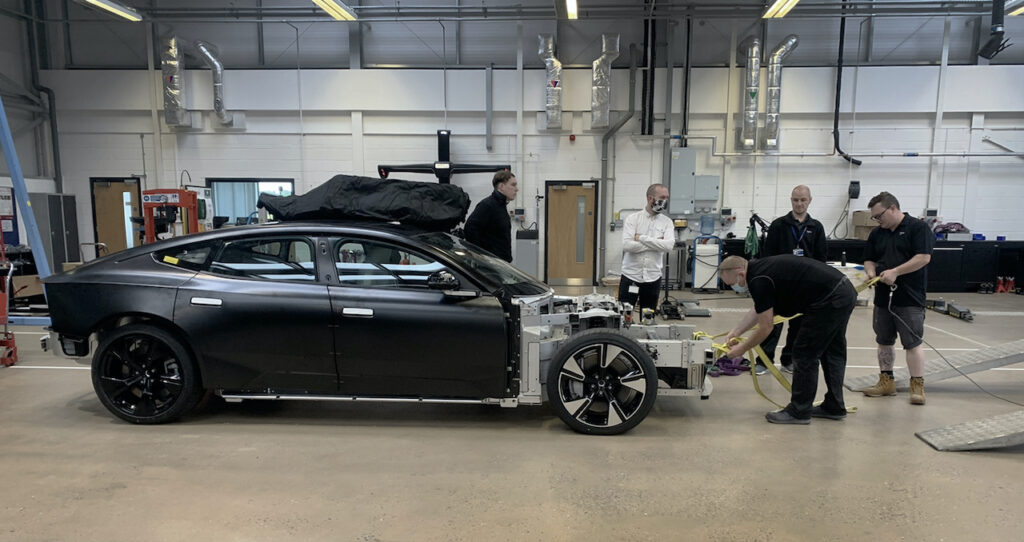
It is planned to be priced at a similar level to the Porsche Panamera, which in Australia sells for between $203,500 and $426,500.
Like the Polestar 3, the Polestar 5 will be built on the SPA2 architecture.
While there are no details, the Polestar 5 also appears set to get the maximum 650kW dual-motor setup that promises big performance (more details on that below).
The Polestar 5 will only be manufactured at a low-volume Geely plant in Chongqing, with plans to manufacture about 30,000 vehicles annually.
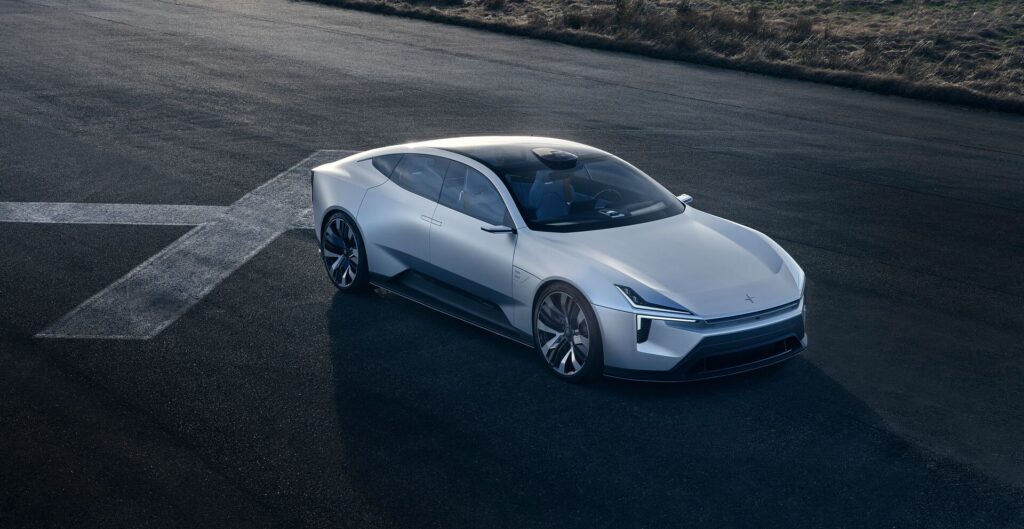
But it will play a crucial role in building Geely’s planned production volumes to around 290,000 vehicles by 2025 (Tesla sold about 500,000 cars in 2020 and is already on target to smash that in 2021).
The Polestar 5 is also planned to use the next generation of sustainable materials, included reclaimed fishing nets to produce floor mats and recycled cork-based vinyl for seat bolsters and head rests.
High-performance e-motor
Polestar says it is also developing a new electric motor codenamed P10.
The motor is planned to make up to 450kW, which Polestar points out is more than the rear motor on the Porsche Taycan (300kW).
Of course, much of this is talking the company up ahead of its US$20b stock market listing and it’s worth pointing out that the P10 e-motor is not in production yet.
There’s every chance Porsche and others will have plenty more in the development pipeline.
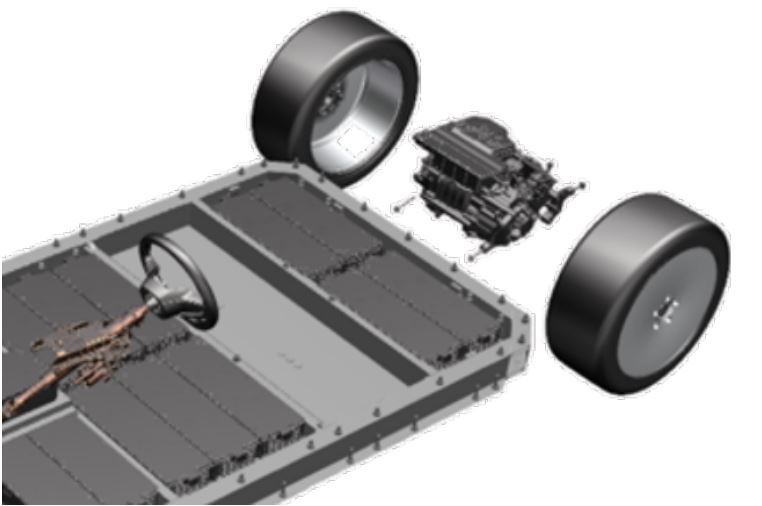
The new Polestar P10 electric motor can be hooked up to a two-speed dual clutch gearbox that allows the motor to be temporarily disconnected for improved efficiency, presumably when coasting.
The 450kW motor will also be able to be paired with a 200kW front motor for a combined maximum output of 650kW.
Polestar also says it will introduce 800V battery technology to allow for faster charging. The 800V tech matches that used in the Porsche Taycan, Audi e-Tron GT, Hyundai Ioniq 5 and Kia EV6.
Polestar also says it will have vehicle-to-grid (or bi-directional) charging capability, allowing the battery packs to feed back into the grid or power a house.
Another Polestar to come after 2025
Polestar says its future expansion also allows for another new model to launch after 2025.
Logic suggests it will be called the Polestar 6, although that detail has not been given yet.


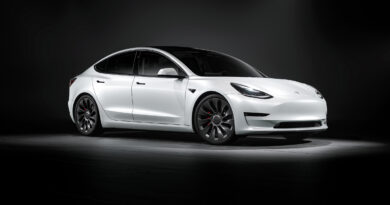
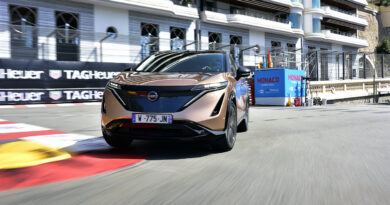

Hello EV Central,
As a rural citizen, what interests me about the choice of electric vehicle is the ground clearance. This metric never seems to appear in the specifications list for any new EV – even those purporting to be SUVs. Would it be possible for you to publish the clearance dimension in future reviews of EVs in your newsletter?
Many thanks,